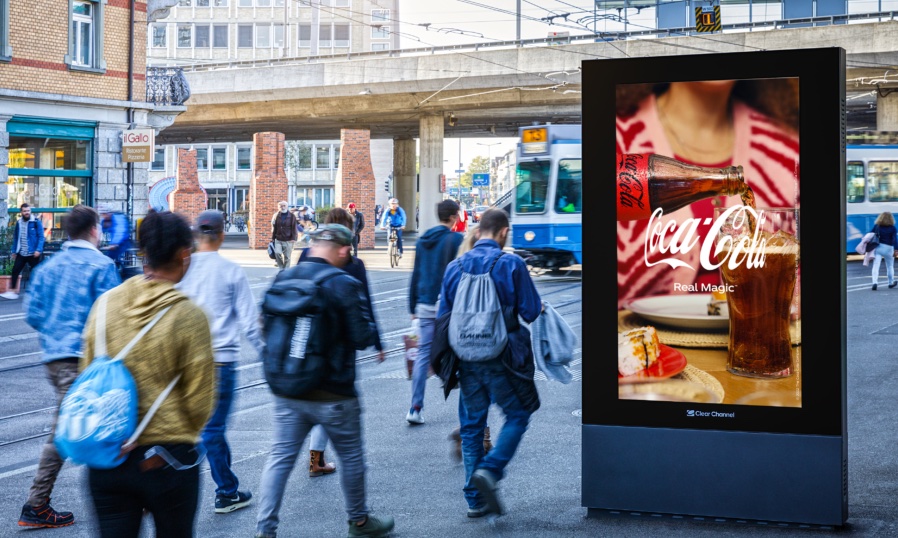
Swiss OOH Ad Industry Adopts Voluntary Energy Savings To (Hopefully) Pre-empt Gov’t Mandates
August 26, 2022 by Dave Haynes
Switzerland has joined Germany and Spain in taking measures to reduce energy usage on digital ad displays, as fall and winter approach and Russian’s continued invasion of Ukraine affects energy availability.
Our German language content partner Invidis reports:
While the screen runtime in Germany is limited by law from September 1st, the out-of-home industry in Switzerland wants to prevent the adoption of potentially drastic measures with a voluntary restriction. The members of the AWS (Association of Outdoor Advertising Switzerland) have committed themselves to switching off DooH surfaces for one hour longer than before – in order to reduce their power consumption by 5 to 7 percent. The temporary self-restraint should take effect from October 1, 2022.
At the same time, the AWS appeals to the Swiss authorities to maintain proportionality and to refrain from switching off illuminated posters and screens across the board. For example, the energy consumption of backlit posters (0.029 kWh for F200L) as well as indoor (0.312 kWh for 85 inches) and outdoor displays (0.700 kWh for 75 inches) is significantly lower than video streaming with a TV (1.3 kWh for 65 inches, 4K resolution and Landline). The AWS therefore calls for prioritizing measures that are more important.
In Switzerland, the OSTRAL (Organization for Power Supply in Extraordinary Situations) proposes in power shortages that the Federal Council issue bans and restrictions on energy-intensive and non-essential devices as part of a management ordinance. According to AWS, this could include neon signs in a first phase, although the Ostral does not specify the exact type of neon signs.
The association and its members – with APG|SGA, Clear Channel, Horizon and Neo Advertising as the largest representatives – say they want to implement other company-specific energy saving measures in addition to the runtime limitation.
There are genuine savings from switching off screens at night, but a reader contacted me with the valid point that shutting off screens earlier or totally at night will only nominally reduce consumption, as screens use far more juice running at higher brightness during daylight hours. 600 nits, or even 300, might be fine come evening, but outdoor displays might be using 2,500 to 3,000 to be visible as desired in full daylight conditions.



Leave a comment